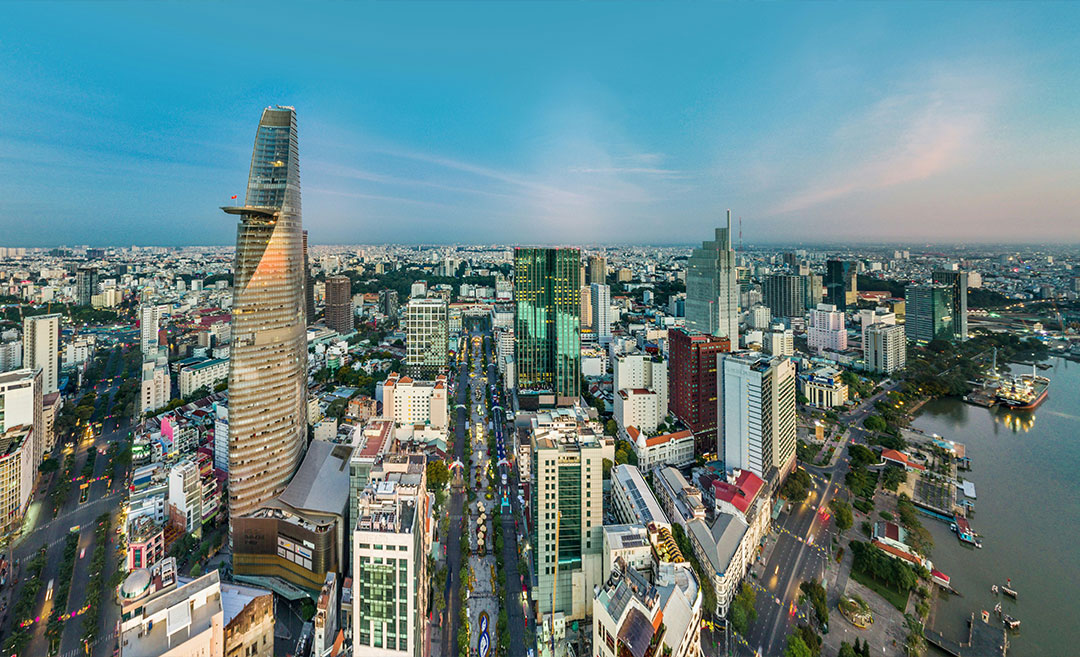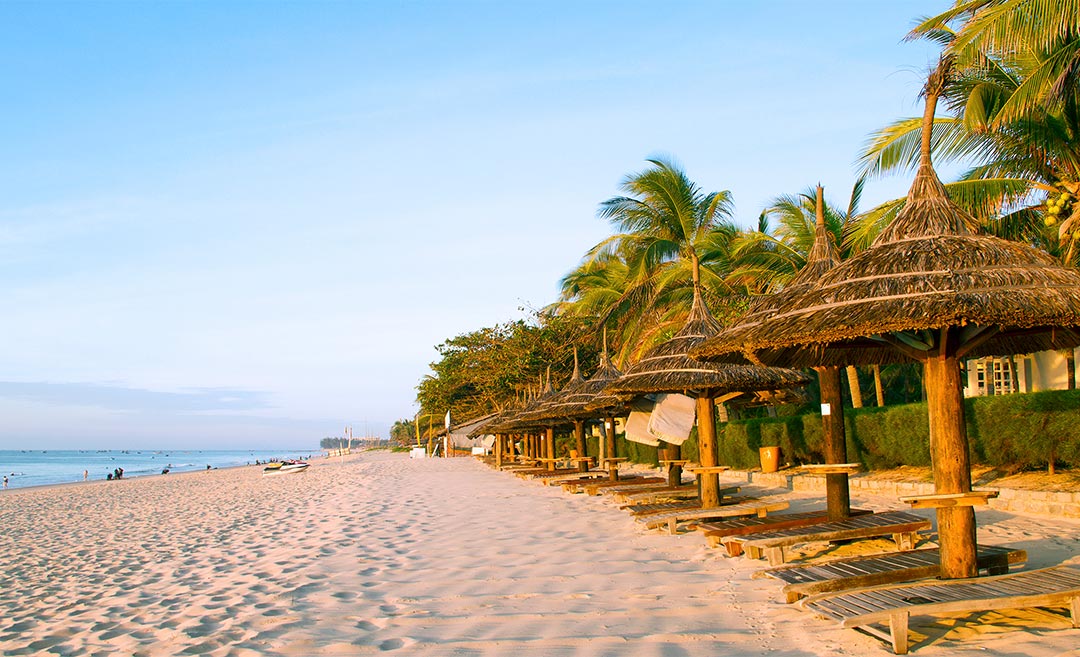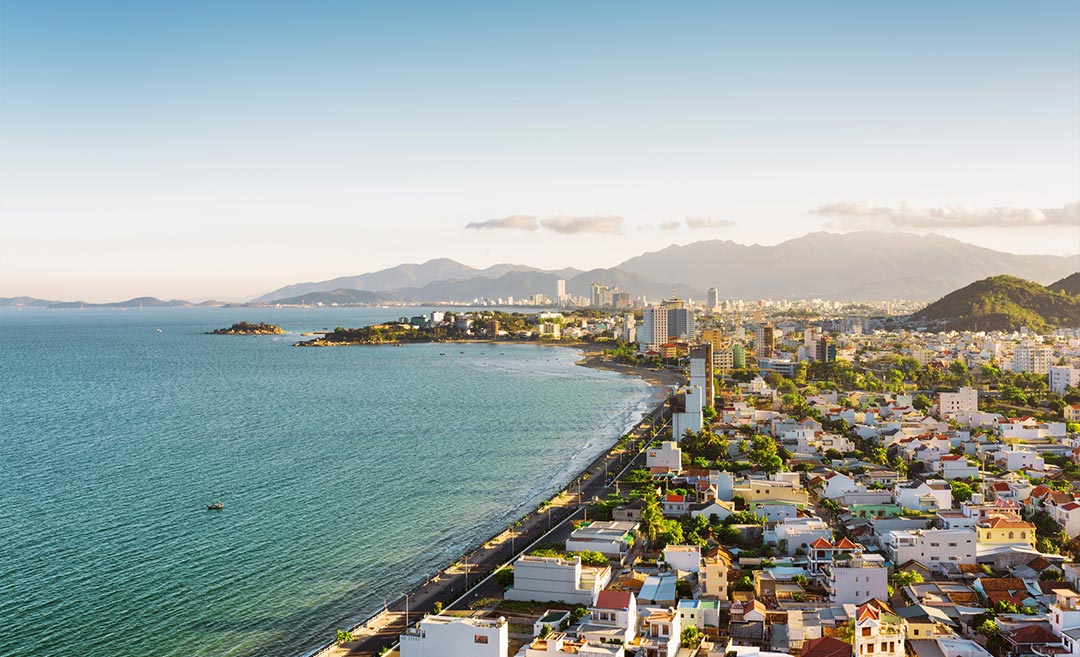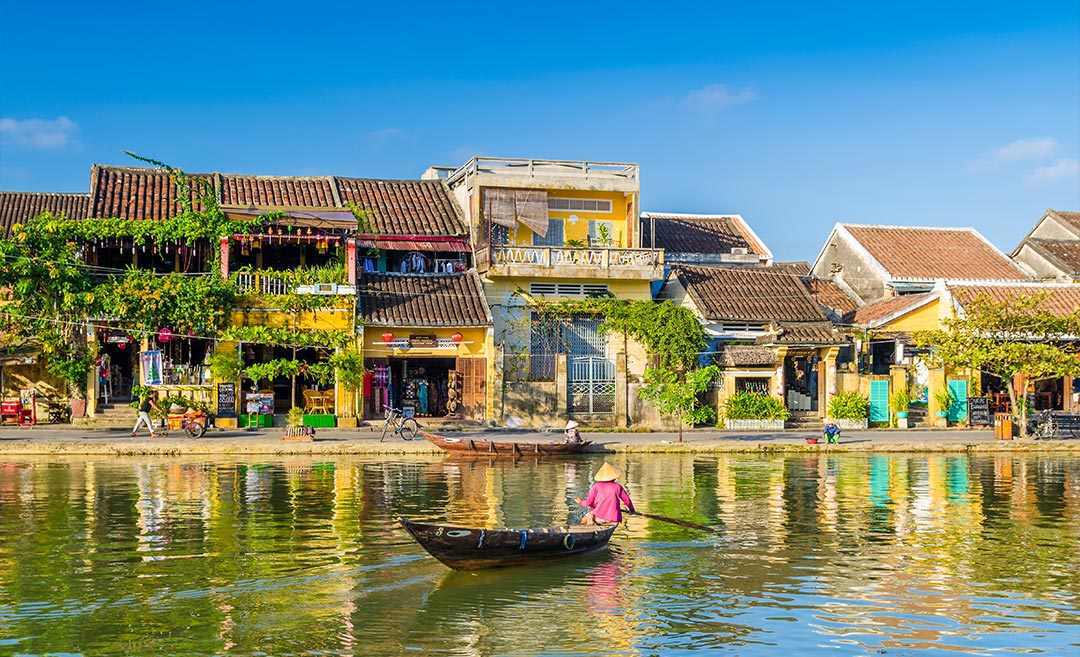Vietnam is one of the most exciting travel destinations in the region. For a few decades after the Vietnam War, it endured arrested development, but things have changed, and with a population of 100 million consumers, it’s ready to do some catching up.
A city risen from ashes
Located just inland on the Saigon River, Ho Chi Minh City (HCMC), Vietnam’s largest city and economic powerhouse, is just a 90-minute flight from Kuala Lumpur, making it a suitable venue for a weekend escape. However, it’s my suggestion that you stay longer as the city offers excellent value for money and tantalising food, and it’s a city that’s on the move.
Dong Khoi, alternatively known as District One, is where most tourists start visiting southern Vietnam. This is understandable as it has the greatest concentration of hotels, restaurants, bars, and shops. However, on my most recent visit, I decided to stay in the Novotel Saigon Centre in District Three, just a little closer to the airport.

Tall buildings now rise above the old French colonial villas, and many streets are lined with tall trees that cast cooling shade over the growing number of motorcyclists.
HCMC is a different beast from Hanoi, which is located in the country’s far north. It’s much faster and flashier than the capital, with the latter tending to be more conservative and known for its history and culture. While both have unique qualities, HCMC is the more invigorating city for a lively weekend or extended visit.
Visitors need to bear in mind that many parts of Vietnam had been virtually decimated by 1975 after years of protracted civil war, and what is seen today in HCMC has evolved almost from scratch over the past half-century. Despite the name Ho Chi Minh City, most of its nine million residents still refer to it by its original name, Saigon.
Sights and sounds: War history & historical buildings
I was interested in learning more about the war – the American War, as it’s referred to in the country (what Westerners call the Vietnam War). The concierge at the Novotel told me about the War Remnants Museum (once called the ‘House for Displaying War Crimes of American Imperialism’), located just near the hotel on Vo Van Tan Street. It houses numerous American fighting machines like an F-5A fighter, a ‘Huey’ chopper, daisy-cutter bombs, and an M48 Patton tank.

There are some fine buildings from the French era in the downtown area. The Ho Chi Minh City Hall (formerly called L’hôtel de ville) is a fine example of colonial architecture, and the adjoining park surrounded by the Parkson Mall, Hotel Continental, Rex Hotel, and the ornately decorated Opera House make a good location to appreciate just how unique this city is.
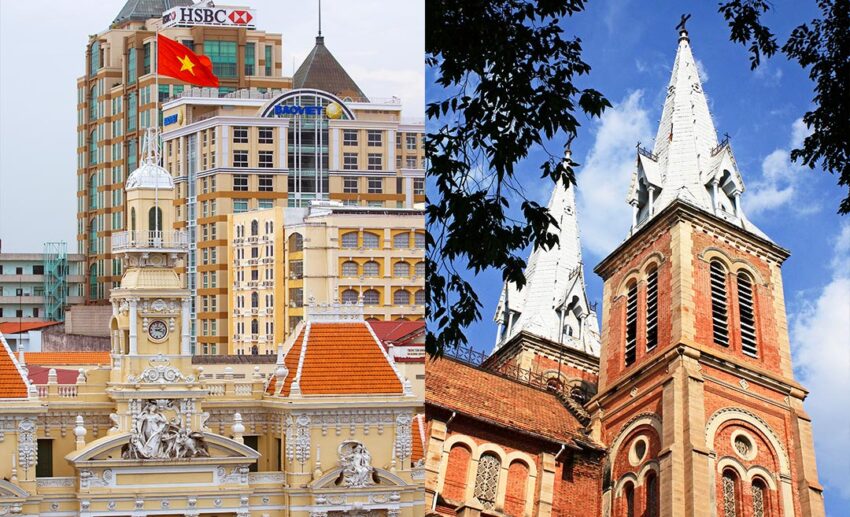
On a walking tour from the Novotel, other buildings that captured my imagination included the Post Office and the Notre Dame Cathedral. The latter was completed in 1880, with almost all building materials imported from France.
The city is on the go, with much of the movement being in the form of motorcyclists that hurtle around the city like ants from a disturbed nest. Not so long ago, the main form of transportation was bicycles, but growing affluence ensures that upwardly mobile residents now ride motorbikes. Motorbikes are used to carry almost anything and everything around the city. A metro is under construction, but I found it best to walk around, although Grab (an e-hailing app) is available.
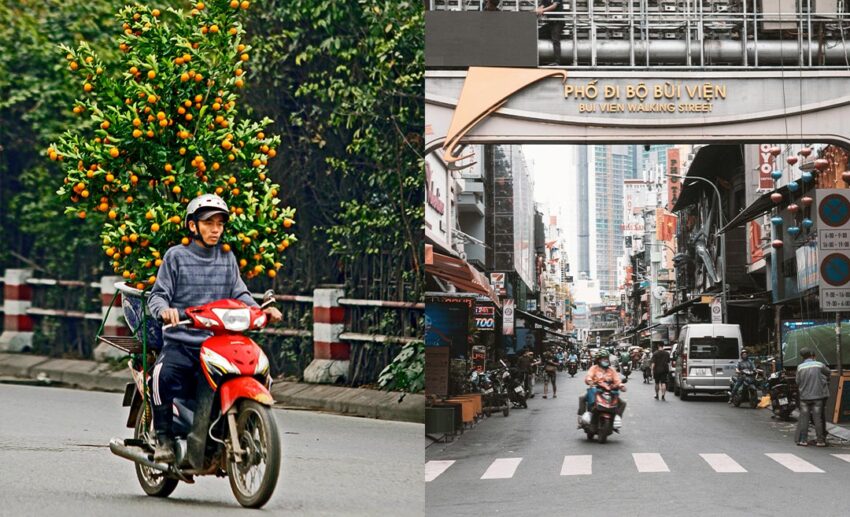
A night on the town: Local food & bars
The Vietnamese national dish is pho (pronounced ‘fur’), a noodle soup served with beef or chicken. Delicious bowls of broth are cheap and available everywhere, including concept restaurants such as Pho 24.
Fresh fruit is sold all over the city, especially in streetside markets, and coffee is taken seriously in Vietnam with several local concept brands. In many cases, coffee is traditionally served from aluminium immersed in sitting on top of small cups. Boiling water is poured over the immerser containing the ground coffee beans, and the delicious brew slowly drips through into the glass below. Some well-developed local chains I enjoyed coffee in included Highlands Coffee and Trung Nguyen.
There are bar streets and even bar districts, one of the most accessible being Ton That Thiep Street. The Rooftop Bar on top of the Rex Hotel, with its oversized golden crown protected on either side by two rampaging elephants, hasn’t changed in decades, and its open-air setting is still as atmospheric as it was when the last war correspondent left its hallowed grounds.
After a day’s sightseeing, I was more than happy to relax at the Novotel, especially after it was brought to my attention that there was a rooftop bar. Being a short distance from District One, OnTop Bar on the 20th floor of the Novotel has pleasant views of the inner suburbs, and in the tropical weather, it was most atmospheric at dusk. Conveniently, dusk coincides with the bar’s happy-hour promotions from 5pm to 7:30pm. The prices are reasonable, and snacks are also available.

Local beers such as chilled Halida, 333, and Saigon are served, and bar staff told me that cheap beer, known as beer hoi, is sold in makeshift stalls in streetside locations outside the hotel.
Some stratospheric and atmospheric bars in other parts of the city include Saigon Saigon in the Caravelle Hotel. Located ten floors above the street, it offers some of the city’s most panoramic views. Level 23 Wine Bar at the top of the Sheraton Hotel is one of the city’s smartest bars where patrons can take in 360-degree views of the urban expanse.
Shopping frenzy in HCMC
Shoppers will be delirious about the retail opportunities available in HCMC, ranging from lively markets to cool designer boutiques. For designer labels, head to the Rex Hotel (Loewe, Cartier, Ralph Lauren, and Bvlgari) or along Dong Khoi Street in District One.

Market shoppers need to check out Ben Thanh Market in downtown HCMC for a myriad of all things Vietnamese.
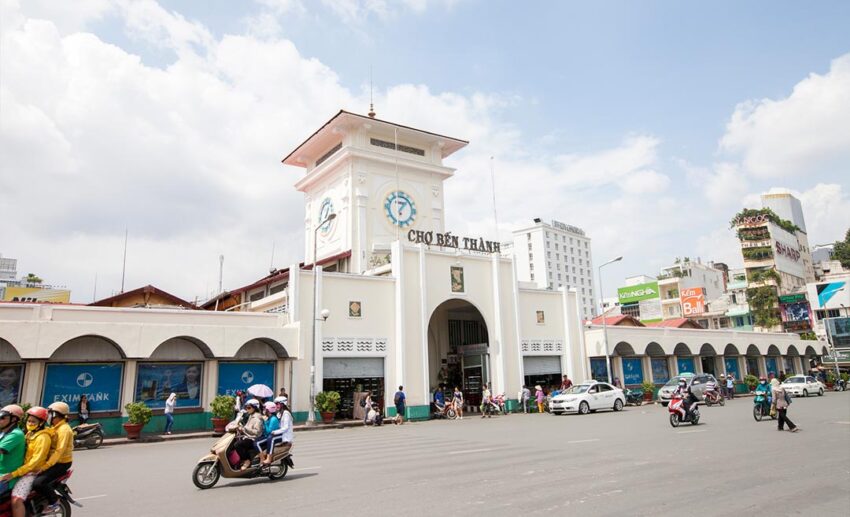
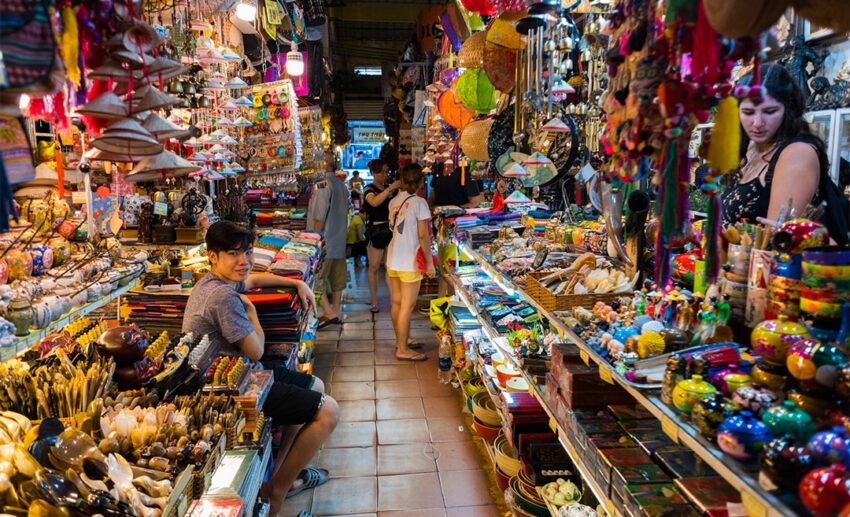
There is a map of the stalls in the market at the entrance, and the stalls that captured my imagination were those selling coffee and the aluminium immersers used to make Vietnamese coffee. ‘Weasel’ coffee (undigested beans that have passed through the stomach of civet cats) is a coffee for connoisseurs. Colourful revolutionary-style posters are also available, with reproductions being relatively cheap, but original, historic posters are expensive.
Getting around Ho Chi Minh City
Getting around the city is relatively easy, with Districts One and Three being the best explored on foot. Many Vietnamese will be keen to get you around on cyclos (trishaws), motorbikes, private cars, or anything that moves. However, Grab will prove to be the best bet for safety and convenience, as well as the fact that you know the fare before you set off. While the volume of motorbikes on the streets can be daunting, persevere and walk slowly but assertively, and motorcyclists will move around you (that’s the theory, anyway).
Getting there
AirAsia has daily flights to Ho Chi Minh City, and with Vietnam one hour behind Malaysia time, you seemingly arrive a little after you depart. The savings made on low fares can be invested in enjoying the good life in Vietnam.
Where to stay
Novotel Saigon Centre is well located and has excellent facilities.

Visas
Malaysians don’t need a visa to visit Vietnam, but many other nationalities do. It is advisable to apply early for an online visa to avoid exorbitant last-minute charges.
All images are by author unless specified otherwise.

